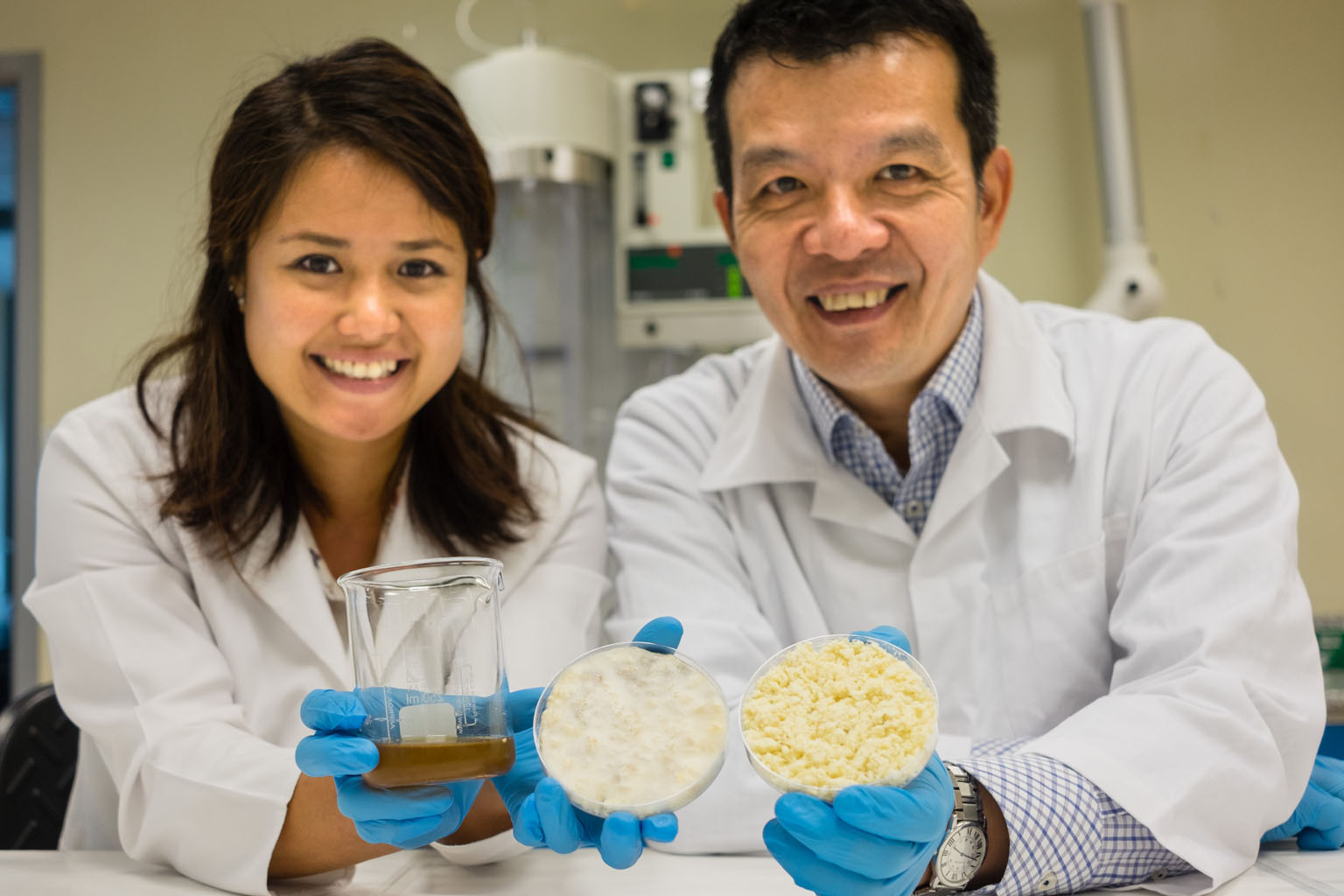Turning soya bean waste into a medium for yeast to grow on
NTU scientists' brainchild costs much less than current commercial media and helps cut food waste
Sign up now: Get tips on how to help your child succeed

Dr Lee (left) and Prof Chen with the yeast growth medium they developed and samples of soya bean residue. A litre of their culture medium costs just $3.
PHOTO: NTU
Samantha Boh
Follow topic:
Instead of sending 30,000kg of soya bean residue produced here to the dump each year, why not use it to cultivate yeast - one of the world's most versatile microorganisms - some local scientists asked two years ago.
Now, those scientists have found the way to do just that.
They have developed a method that turns soya bean residue - left over from, for example, soya milk and tofu production - into a solution that can be used to grow yeast.
Based on their calculations, the method could cut the cost of cultivating yeast.
It could also reduce dependency on crop plants like potato and wheat, which are currently needed to create commercial yeast-growing media.
Tests in the laboratory have produced favourable results.
"Our data shows that the culture medium we developed grows baker's yeast as fast as commercial culture media," said Professor William Chen of Nanyang Technological University's (NTU) School of Chemical and Biomedical Engineering, who led the research.
He noted that yeast is now used globally for various purposes, including to bake, to make beer and in vaccine production.
"So the impact is potentially wide-ranging," he said.
According to Dr Jaslyn Lee, also from the School of Chemical and Biomedical Engineering and a member of the research team, the method involves adding soya bean residue - called okara - to a type of food-grade microorganism which secretes enzymes to break the residue down into a cotton wool-like product.
This is then mashed up to produce the yeast-growing medium. The entire process takes five days.
Current commercial culture media contain peptones - soluble proteins now generally derived from crop plants like potato and wheat - and yeast extract, a litre of which costs between $11 and $36.
A litre of the NTU medium will cost $3.
For every kilogram of soya bean used, 1.1kg of soya bean residue is produced. Just 200g of residue can make a litre of the medium.
Ms Loong Mann Na, director of the Food Innovation and Resource Centre at Singapore Polytechnic, said the NTU research is an example of using sustainable production methods to make better use of by-products from manufacturing processes.
"The method of production is also deemed to be cleaner, more efficient and natural," she said.
Professor Vincenzo Fogliano, who specialises in food science at Wageningen University in the Netherlands, said the NTU discovery could make the production of many biotech products, such as proteins and vaccines, much cheaper.
"From a more global perspective this research helps the planet in terms of sustainability of food production and reduction of agri-food waste," he said.

